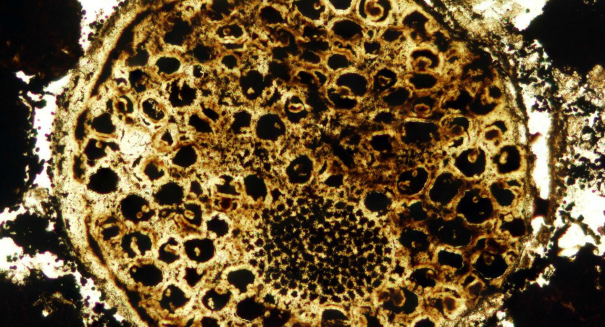
Researchers at Virginia Tech discovered a mysterious spherical fossil that could represent the first example of a multicellular organism with differentiation of cell purposes.
A set of strange spherical fossils recently unearthed in southern China may be the oldest known examples of animal life on the planet. At 600 million years old, they could be our oldest known animal ancestors.
While the fossils, known as Megasphaera, measure only .03 inches across, they’re not protists or bacteria. Instead, they display a complex multicellular structure- the oldest found in the world.
Virginia Tech geobiologist Shuhai Xiao, one of the team researchers, was quick to point out the significance of this discovery. “The real value of these fossils is that we now have some direct evidence about how this transition from single-celled organisms to things like animals and plants occurred in the evolutionary past,” he said.
The fossils were discovered in southern China’s Doushantuo Formation, a rock bed in Guizhou Province known for preserving ancient microorganisms. When Xiao first studied the specimens in 1998, his original conclusion was that the fossils were embryos; however, no adult specimens were ever found, leading scientists to conclude that Megasphaera was a critical gap between single- and multi-cellular development.
Xiao and his team observed that the fossils contained multiple cells of different types and sizes. This suggests the early development of different tissue types with differentiation of structure and function. Earlier organisms, such as bacteria, have no such traits.
Megasphaera also contained embedded cells that were much smaller than the others; these were named “matryoshkas,” in reference to Russian nesting dolls. It is thought that the matryoshkas could be early forms of reproductive cells. This would represent the first cellular differentiation of reproductive versus somatic cells.
While Megasphaera is regarded as the first animal specimen, its anatomy resembles early algae. The creature could well have been a plant. Regardless of its classification, it remains significant as a major transition between single- and multi-cellular life with clear differentiation of cells.
Xiao’s findings were published in the journal Nature on Sept. 24, 2014.
Leave a Reply